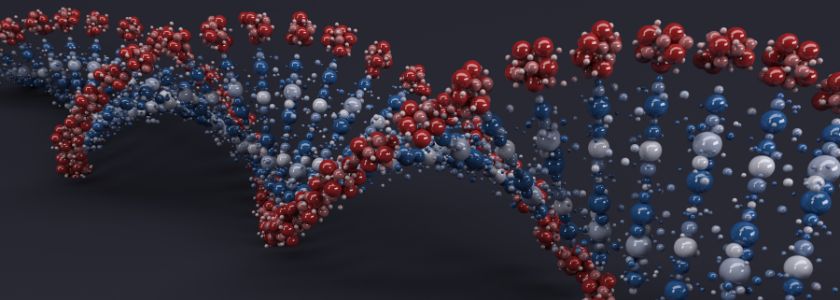Mutagenesis: History, methods, tips and more

The takeaway: Mutagenesis is a process where an organism’s genetic information is changed using a mutation. For researchers engaged in in vitro mutagenesis, IDT’s Mutagenesis Handbook covers application basics, protocols, and more.
Mutagenesis is a molecular biology technique where an organism’s DNA are changed, which results in a gene mutation. Mutagenesis can occur naturally or as a result of exposure to mutagens and can also happen under certain lab procedures.
In laboratory settings, mutagenesis is conducted to examine the function of a gene or protein in detail, and mutant strains of organisms have practical applications.
Early on, when the practice was being developed, mutagenesis experiments produced random mutations, though modern methods have been refined to produce site-specific mutations. Today, lab practices that can be used to generate these mutations include:
-
PCR or site-directed mutagenesis (SDM)
-
Directed mutagenesis
-
Insertional mutagenesis
-
And others
IDT’s Mutagenesis Handbook, which is a free on-demand download, offers an introduction to the practice, details site-directed mutagenesis in a primer annealing site, includes tips for the use of DNA cassettes, and is packed with tons of protocols. Let’s look at it in a bit more detail.
Mutagenesis: A brief history
The history of the development of mutagenesis is tied closely to the evolution of our understanding of cancer. As early as 1775, researchers noted ties between scrotal cancer and boys who swept chimneys and theorized that chimney soot contained carcinogens that could cause the cancer. Later, in France, researchers noted that laborers working in vineyards had a high incidence of skin cancer on the backs of their necks—skin that was exposed to sun when the laborers bent over to pick grapes.
While some mutagens are natural—the UV radiation in sunlight or the hydrocarbons in soot—others are synthetic, and mutagens can affect DNA in different ways. In the 1920s, researchers used X-rays on fruit flies to dramatically increase mutation rates, and subsequent work identified chemicals that are mutagenic, such as mustard gas. Work with the fruit fly led to the development of the first mutagenesis assay by Hermann Muller. The Ames test, developed in the 1960s by biologist Bruce Ames, became an inexpensive method for determining the mutagenic potential of many chemical compounds. Today that same test is widely used, for example, by researchers in the pharmaceutical industry who are testing drugs prior to their use in clinical trials.
Methods for site-directed mutagenesis
Traditionally, the most popular technique for performing site-directed mutagenesis has been polymerase chain reaction (PCR) based methods. However, the availability of custom, synthetic double-stranded DNA
(dsDNA) fragments can dramatically reduce the amount of time and number of steps required to get the same sequence changes.
Three methods for site-directed mutagenesis include:
-
Traditional PCR: Primers are designed to include the change of interest, be it a base substitution, addition, or deletion.
-
Primer extension mutagenesis: This involves the incorporation of mutagenic primers in independent, nested PCRs before combining them into a final product.
-
Inverse PCR mutagenesis: Amplification of a region of an unknown sequence using primers that are oriented in the reverse direction.
IDT options for dsDNA fragments include eBlocks™ Gene Fragments, gBlocks™ Gene Fragments, and gBlocks™ HiFi Gene Fragments. .
Mutagenesis tips for troubleshooting: Figuring out what went wrong
Since mutagenesis is a multi-step process that varies greatly depending on the chosen methods, project goals, and target sequence information, users can expect the need to problem-solve to maximize their desired results. The most common root causes include:
-
No PCR product: Primer design, template concentration and quality, reaction setup, reaction components, and/or PCR reaction parameters
-
Multiple products observed: Primer design, template concentration and quality, reaction setup, reaction components, and/or PCR reaction parameters
-
Smeared products: Primer design, template concentration and quality, reaction setup, reaction components, and/or PCR reaction parameters
-
Too few colonies, too many colonies or satellite colonies: Transformation
-
Colonies in negative controls: Ligation or restriction enzyme Dpnl digestion
-
No mutations in plasmids: Ligation or Dpnl digestion
-
Plasmids have deletions or rearrangements: Ligation or transformation
-
No or few mutants when screening: Dpnl digestion or transformation
Mutagenesis handbook: Get yours now
IDT’s Mutagenesis Handbook provides an overview of mutagenesis applications and methods. It is packed with mutagenesis protocols and details experimental mutagenesis troubleshooting. Getting your copy is easy—follow this link to get yours now.
